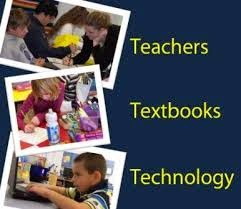How can technology engage and inspire learning for diverse students?
Multicultural education is a term used to describe how teachers go about affirming the expansive diversity of student interest, needs, and talents present in every school classroom.
James Banks states that all students regardless of where they come from or physical characteristics should have a equal chance to learn in school and participate in all programs and activities.
Sparking an interest is a key element within a group that is
diverse. What are their common interests
and how can a teacher capitalize creating lessons around the group’s interest.
Integrating technology that allows students to obtain
knowledge regarding information they have never been exposed to help students
realize that their dream may not be out of their reach.
Technology can assist with making culturally relevant
curriculum and instruction available to students as they learn how math will
help them in real world situation.
Creating teaching and learning situations in which students
can work together allow for student cross culture, racial, language, and gender
boundaries on common projects together using technology.
Student benefit when their classroom goes beyond its four
walls and into real world events and situations. Technology gives students the
access to any type of information they can think of or what to research. Teachers can utilize virtual field trips,
translation materials and ways to expand communication between students and
teachers during class as well is outside of school.
Tech Tools
Social Bookmarking
Classroom blogs
























